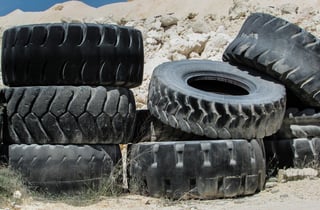 2016 marks the 29th year that over 10,000 certified CVSA inspectors will participate in the annual 72-hour enforcement event in every jurisdiction across North America. On average, 17 commercial motor vehicles are inspected every second during this three-day event. This year the focus will be on tires in addition to the normal issues noted during roadside inspections.
2016 marks the 29th year that over 10,000 certified CVSA inspectors will participate in the annual 72-hour enforcement event in every jurisdiction across North America. On average, 17 commercial motor vehicles are inspected every second during this three-day event. This year the focus will be on tires in addition to the normal issues noted during roadside inspections.
2015 in Review
As shown in the data collected from 2015, tires continue to be common violations during this inspection. As you can see by the “top five” from last year, flat tires, exposed fabric, and tread depth violations continue to lead the way when it comes to out of service issues (OOS).
| Rank (by OOS) | Violation | % of OOS Violations |
| 1 | Flat and/or audible air leak | 36% |
| 2 | Fabric exposed ply or belt exposed | 34% |
| 3 | Tread depth less than 2/32 (non-steering) | 10% |
| 4 | Load weight rating | 8% |
| 5 | Tread depth less than 4/32 (steer) | 3% |
FMCSRs for Tires
In light of this focus for 2016, let’s review the FMCSRs pertaining to tires in preparation for June 7-9, 2016.
The most common reason CMVs are placed OOS for tires is when the unit has a flat or is under inflated for the load it is carrying. Flat tires should not be driven on unless one is clearing the traveled portion of the roadway. Extended operation on a flat tire often results in debris issues when the tire eventually disintegrates, or even worse, tire fires that are difficult to extinguish. Obviously flats happen and cannot always be predicted; however, a thorough walk-a-round can often times catch cuts, bulges, sidewall separations, and embedded objects before the tire fails. Any flat will result in an OOS violation that has to be repaired immediately. Repairs at odd hours, weight facilities and roadside locations are much costlier than those at the terminal or shop. Spend time looking critically at your tires when you are doing your pre and post trip inspections.
Tread Depth Recommendations
Tread depth must be no less than 4/32” for steer tires and 2/32” for the rest. Those measurements are taken in a major tread groove. Common sense indicates that worn tires don’t appear overnight, so again the driver inspection is key as tires incur extended mileage. Tire tread depth gauges are the most accurate way to measure tread depth but the penny/quarter method can be used, absent a proper tool. When Lincoln’s head isn’t covered by the tread you are at 2/32" or less. The same goes for George on a quarter to determine 4/32”. One warning is that studies routinely show tread depths at or close to the legal minimums will not be able to properly channel water and create a dangerous hydroplaning situation. More tread depth is better to maintain contact with the road surface.
FMCSRs also prohibit regrooved, recapped or retreaded tires on the front wheels of all busses and regrooved tires with a load carrying capacity equal to or greater than 4920# (2232kg) cannot be used on the front of any truck or truck tractor.
Alignment and Tire Wear
Keep vehicle suspension in alignment as improper alignment will rapidly wear tires. Maintain proper air pressure. A 10% PSI under inflation can result in a 20% decrease in tire life and tires can lose three PSI per month due to normal air migration. Tires will also run five degrees hotter for every PSI of under inflation due to flexing. Mismatching air pressure in dual assemblies of as little as five PSI can change the tire circumference. At over 100,000 miles that would be the equivalent of dragging the under inflated tire nearly 250 miles.
Finally, watch the load restrictions on the tires as well, especially if operating under weight permits that exceed normal maximums. You may have a weight permit to exceed normal statutory limits, but do you have the tires to cover that weight?
The Nitty-Gritty on Tire Inspections
Well maintained tires are your very best insurance against costly repairs and potentially catastrophic failures that can result with those associated crashes. While replacement is expensive, the alternative could have carriers wishing they had spent the money when something unfortunate happens. Roadside inspectors are especially critical of tire issues; as I was when I did my inspections. Part of this stems from first hand experiences seeing the results of tire neglect and the associated costs in equipment, injuries, and lives.
.png?width=69&height=53&name=Acrisure%20Logo%20(White%20Horizontal).png)


